Solitude embraces you in this winter wonderland. All the artworks use a limited palette of white, grey, the occasional burnt brown – created by actually burning the paper in Hladik’s work – and beautiful shining silver. This is a very special exhibition, silent with an underlining sound of violin concertos. Meditative and beautiful.
 Installation view of Monochromatic Landscape at Walnut Contemporary, 2017
Installation view of Monochromatic Landscape at Walnut Contemporary, 2017
Curator Ibérina Raquel Vilhena involved three artists: Julia Harris, Gonzalo Bénard and Lumír Hladík. Vilhena wrote, “Three artists, three views: different directions and myriads of experiences. Artists, tossed and shaken by a turbulent world, who are living out the arbitrary divisive gap of inorganic versus organic, natural versus man made. However, the aim of our exhibit was to go deep, to reach way below the surface. We have morphed the gallery itself into a landscape. Here, we ignited a benign alchemy, offering you a journey through spaces and places, uncovering beauty in oddity and discovering wisdom in the mundane. Opening a world of curiosity, charming ambiguity and unexpected unity: resonating thousands of strings, each different in tune, but forming one gargantuan monochromatic chord.”
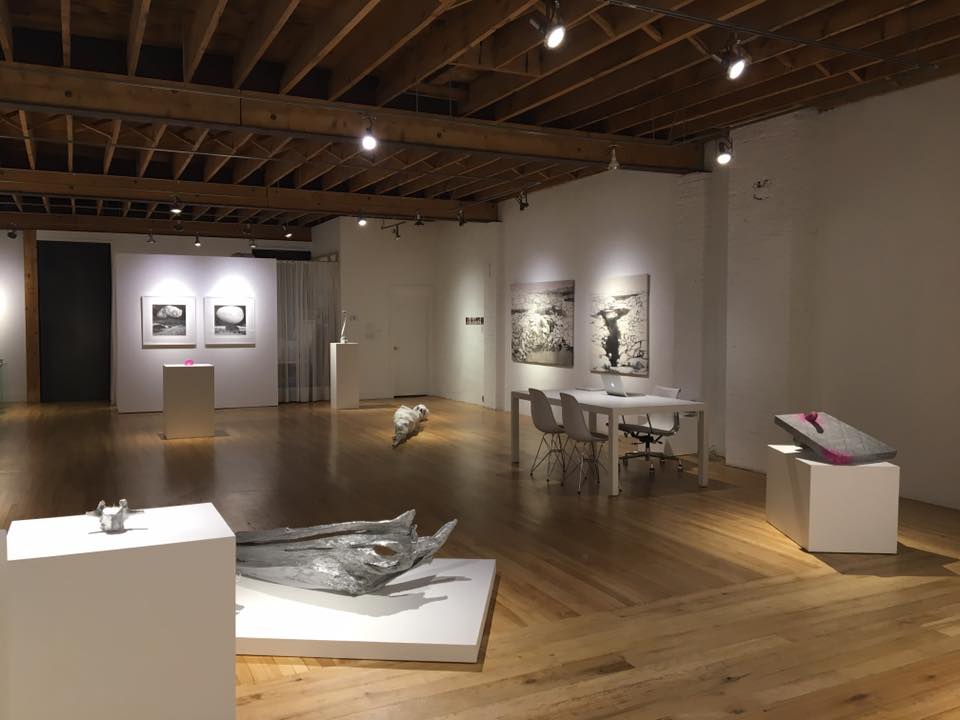 Installation view of Monochromatic Landscape at Walnut Contemporary, 2017
Installation view of Monochromatic Landscape at Walnut Contemporary, 2017
The three artists’ works are really different but they also compliment each other in their unique dramatic appearance and poetic underlining. Two of the walls are covered with Harris’ winter landscapes. Large compositions depicting ice and snow dunes with water running between them or their white shields interrupted by dark grey mud, some even with the ice turning into that much-hated black ice. These landscapes are out there somewhere in undisturbed nature absent any human present, just winter, ice, cold water that looks dark grey in the absence of sunshine and a far off forest with leafless trees. They create a very cold feeling but still somewhat peaceful.
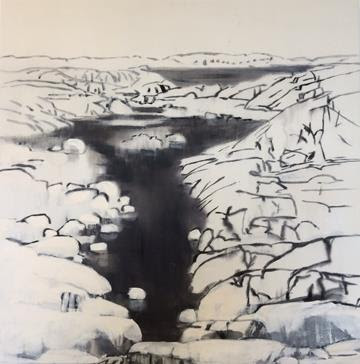 Julia Harris, The pool in winter, 2017, acrylic on canvas, 48 x 48 inches
Julia Harris, The pool in winter, 2017, acrylic on canvas, 48 x 48 inches
Juxtaposed against the amorphous, half abstract shapes of Harris’ work is Bénard stone-stolid forms. He is a multitalented artist with outstanding and challenging photographs. I first recognized him from his Mutantspace series, the man/woman/animal combinations, their dialogues between conscious and subconscious are hard to forget. The Stone Landscapes he exhibits here are equally interesting, especially if you know his other works. In one of them a large, granite stone that seems to be polished into an egg shape that has the illusion of softness, maybe smoothed by human hands or by water. The latest seems more like a found object instead of human made and more symbolic. It stands on a stone needle, hardly touching it, in an alien landscape, ancient or moonlike. Another Stone Landscape depicts a levitating object, that strongly reminds me of the human brain with its veins above a stone crater. It seems to be floating in the air however heavy it might be. Is it emerging from the ground or falling into it? What is it? Is there a living thing underneath the rough surface? Looking at these images I believe that these stones are pulsing with life, as some of the ancient nations believe, that they are alive, feel and communicate with us – as they definitely do in Bénard’s view.
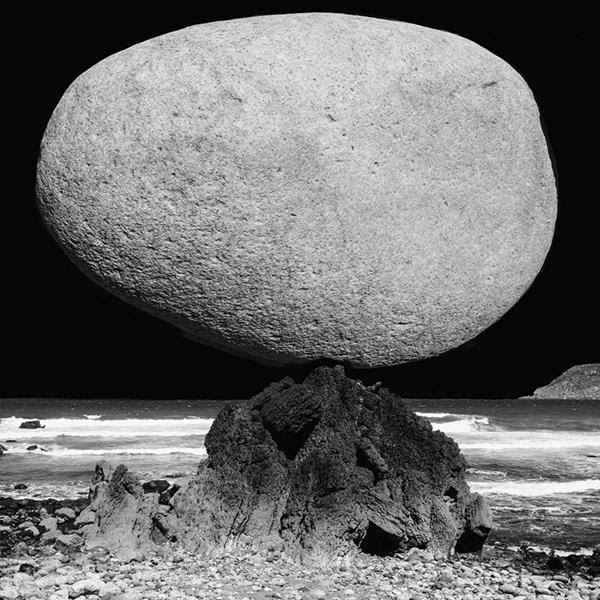 Gonzalo Bénard, Stoned Landscapes, 2017, Photography on 240grs cotton smooth matte archival paper, 19″7 x 19″7
Gonzalo Bénard, Stoned Landscapes, 2017, Photography on 240grs cotton smooth matte archival paper, 19″7 x 19″7
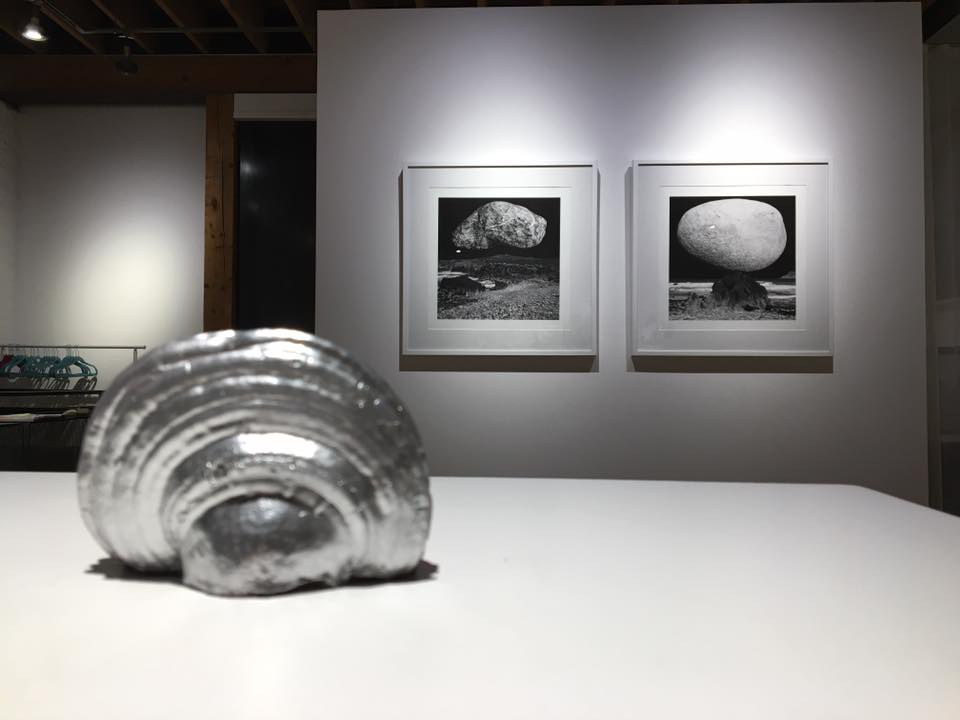 Installation view with Gonzalo Bénard, Stoned Landscapes, 2017, Photography on 240grs cotton smooth matte archival paper, 19″7 x 19″7 (on the wall) and Lumír Hladík’s sculpture (in front)
Installation view with Gonzalo Bénard, Stoned Landscapes, 2017, Photography on 240grs cotton smooth matte archival paper, 19″7 x 19″7 (on the wall) and Lumír Hladík’s sculpture (in front)
The mystery continues in Lumír Hladík sculptural piece, Needles. The tree-mummy, as I call it, captures time through life and death, prolonged afterlife in a “mummified state” and memories of the original event, Christmas, as well as the long period of becoming needleless. The artist picked up a Christmas tree from the street after someone discarded it after the holidays. It was still a Christmas tree, heavy with the memories of a family holiday. Then he took it into his studio and the long wait for it to become completely dead started. It took more than 900 days until all the needles fell off. Who would think it take that long for a cut tree to die? Then Hladík wrapped it lovingly in a burial gauze, creating a tree-mummy. His other trees are painted silver, making them happier-looking, so viewers can lose themselves in the beauty of their natural carvings and knots.
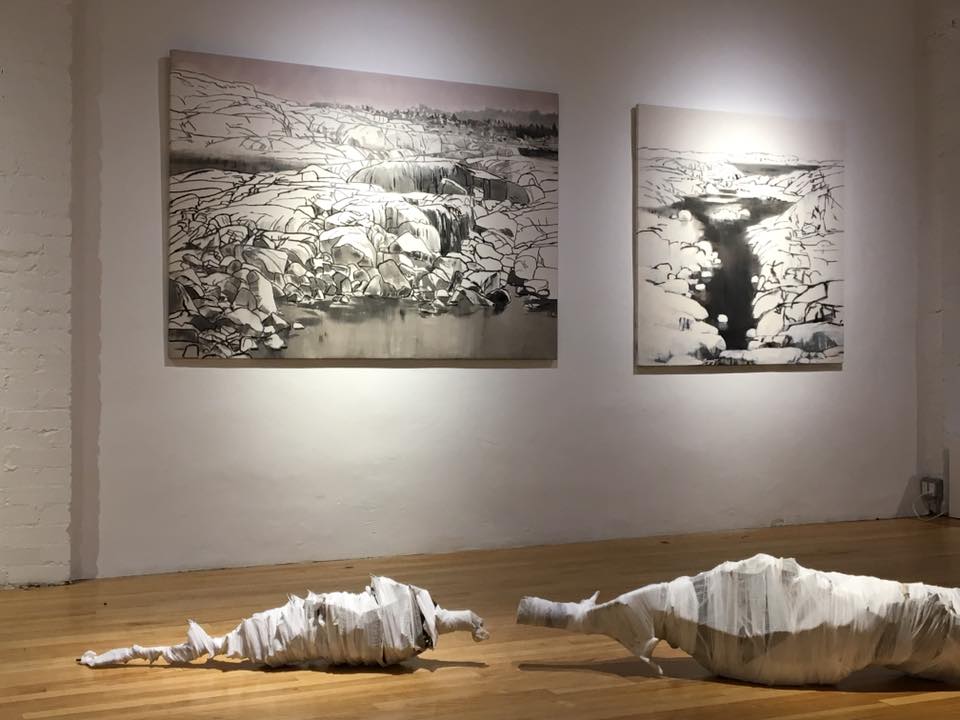 Installation view with works by Julia Harris (on the wall) and Lumír Hladík, Needles (in front)
Installation view with works by Julia Harris (on the wall) and Lumír Hladík, Needles (in front)
The largest wall of the gallery is covered with Arboreal Gothic by Hladík, a rather organic composition created from many pieces of beautiful drawings. Magic is hidden in the sensitive curving lines, the magic of trees, animals and even humans who might be hidden or buried in them. Some old Celtic legends tell stories of wild men living in trees, being put into a young tree that slowly surrounded them still alive. Some of the curving lines remind us of hairy heads of all kind of creatures who look at us through the burned wholes of paper. A white night heavy with mystical air and a distant smoke of bonfire.
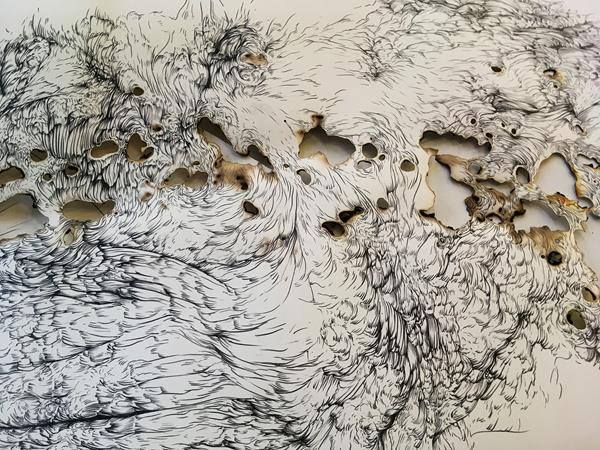 Lumír Hladík, Arboreal Gothic, 2010 – 2016
Lumír Hladík, Arboreal Gothic, 2010 – 2016
The show as a whole vision is a piece of art, a garden of magic and solitude. A sensitive balance seems to be the guiding idea of this exhibition where art works are placed in harmony, like music notes.
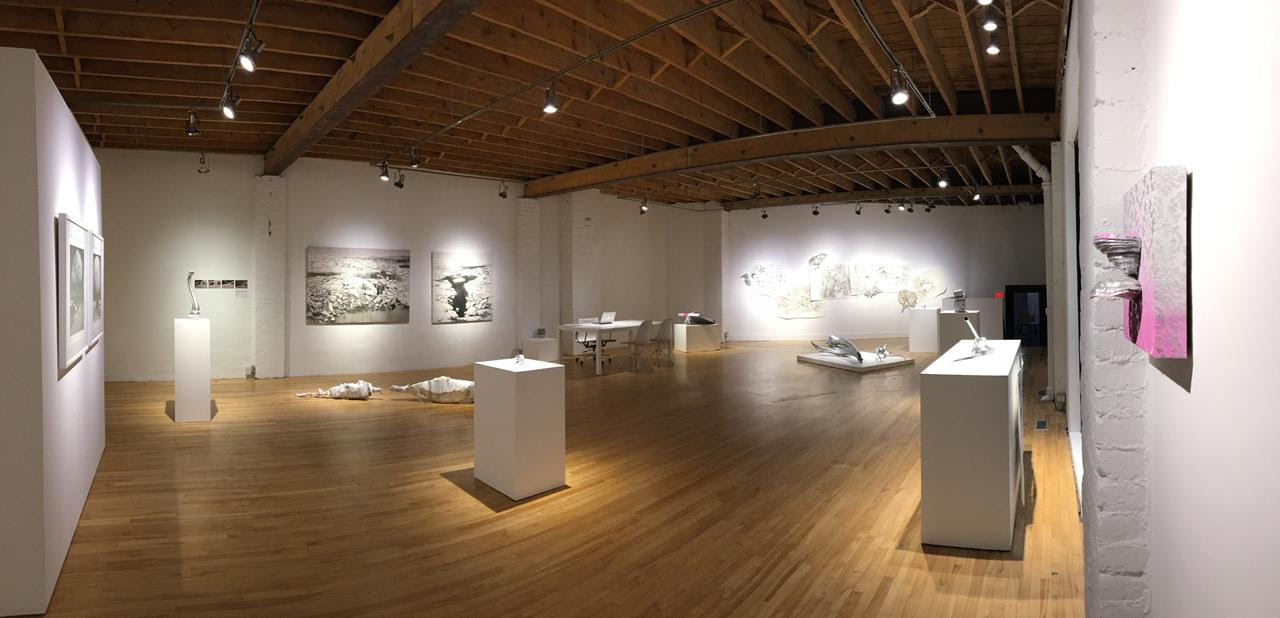 Installation view of Monochromatic Landscape at Walnut Contemporary, 2017
Installation view of Monochromatic Landscape at Walnut Contemporary, 2017
Less is indeed more.
Emese Krunák-Hajagos
Images are courtesy of Walnut Contemporary
*Exhibition information: October 12 – November 25, 2017, Walnut Contemporary, 201 Niagara Street (side lane entrance) Toronto. Gallery hours: Wed to Sat, 1 – 6 pm.
